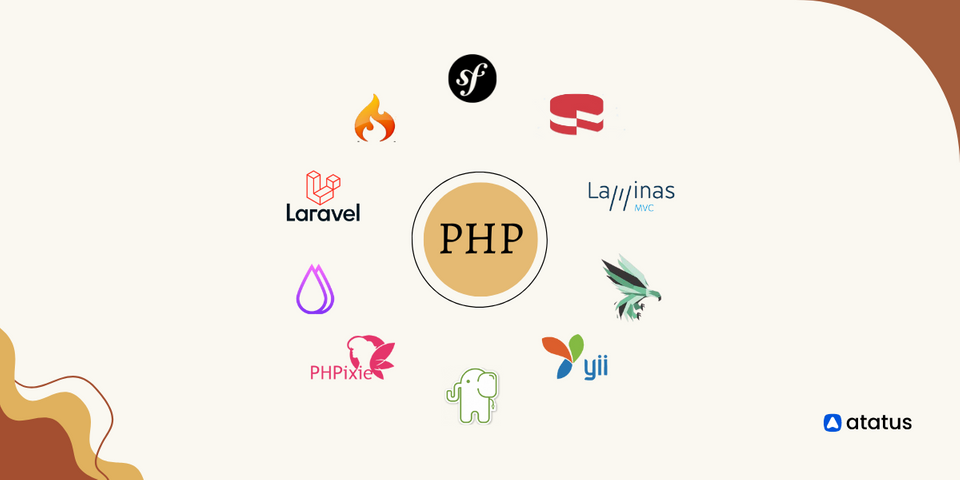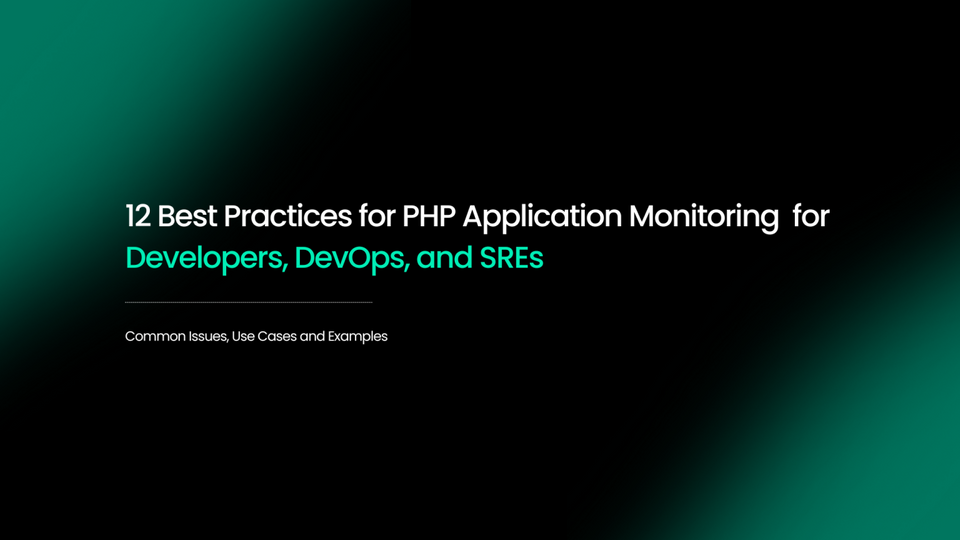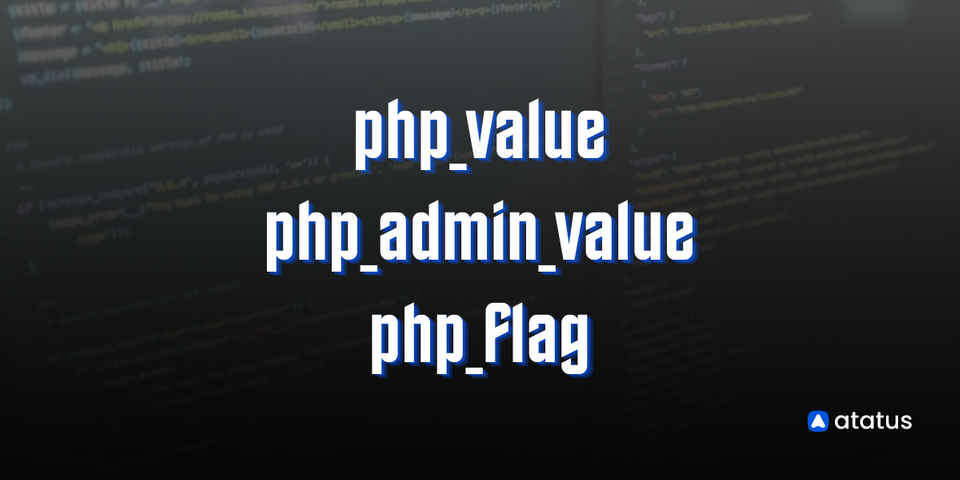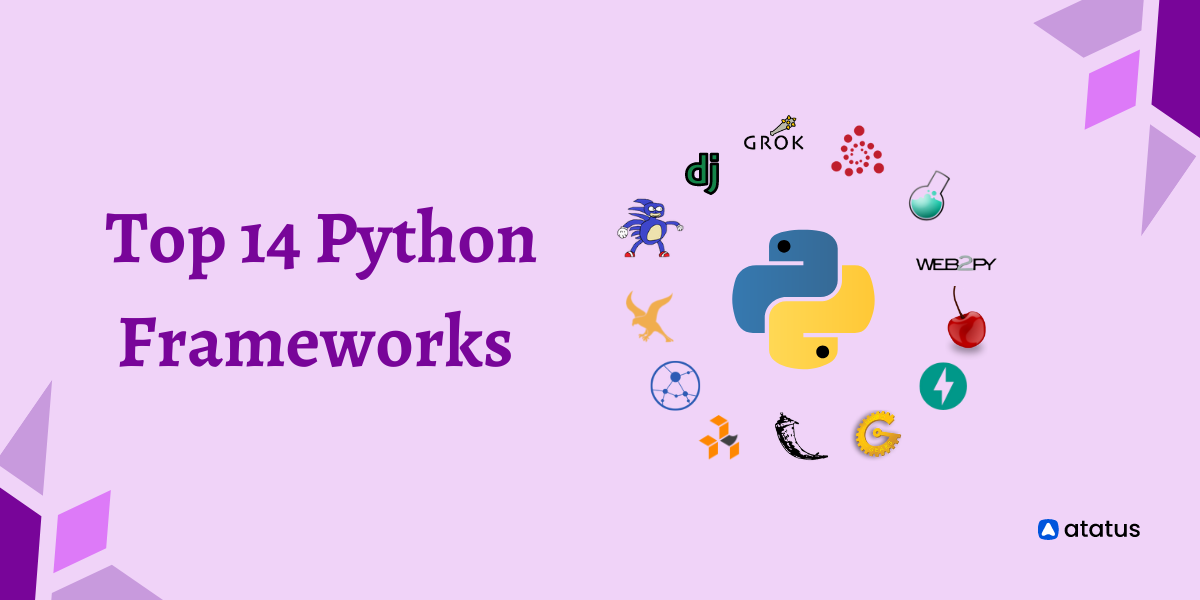Top 10 PHP Frameworks in 2025
PHP’s dynamism has certainly created a niche for it among the languages in the programming world. The ability to create cross-platform applications and compatibility with nearly, all the modern servers tops its open-sourceness, making it all the more desirable.
PHP scripts can easily be inserted into HTML files, allowing developers to transform static website code into dynamic front-end applications.
PHP is undoubtedly one of the best programming languages today. Facebook and Wikipedia still use PHP for their backend data storage. And a lot of PHP frameworks are springing up nowadays. So, one thing is certain. PHP is here to stay! Well then, our task now would be to find the best frameworks to get started with this amazing scripting language.
It can be intimidating to choose a PHP Framework when you are just starting out. That is why we’ve come up with this article to help you make a better-informed choice.
Table Of Contents
What is a Framework?
A framework is a set of libraries, tools, and conventions that provide a structure for building and organizing code. It is designed to support the development of software applications and provides a common set of interfaces, classes, and functions that can be used to build software applications.
It is often based on a specific programming language and provides a set of guidelines and best practices for writing code.
By using a framework, developers can save time and effort when building software applications, because they can reuse code and take advantage of the tools and conventions provided by the framework.
Why PHP Framework?
Wholly made of two simple moving parts - scripting language and the interpreter, PHP is intuitively designed to create maximum ease of coding for developers. "PHP is used by 79% of all the websites whose server-side programming language we know" reports W3Techs.
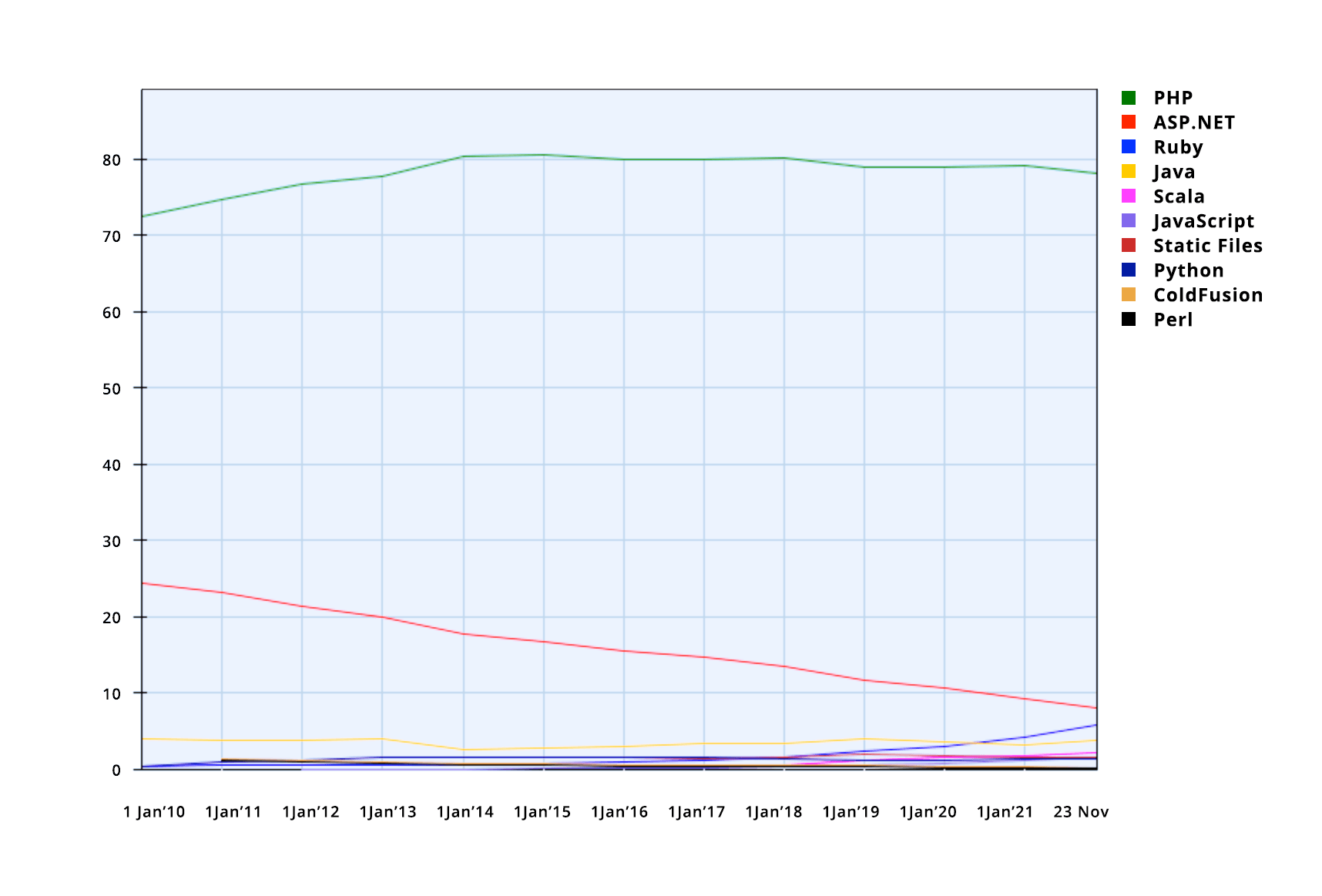
Benefits of using a framework
- Spend less time - When you are developing an application, multitudes of code lines go into its building. These are no easy tasks, they are uploaded only after several stages of checking and rechecking. But then, if you are building a new application later with similar interface, you would have to rewrite the entire code stack. As daunting as it sounds, it is quite impossible. This is when frameworks prove to be an absolute blessing. No need to reinvent the wheel every time, you can simply reuse your old code stack had you built your last application using a PHP Framework.
- Libraries to the rescue - Like I mentioned above, you can reuse your existing codes on your new application. Libraries are clustered bundles that store some commonly used codes and every time you work in a Framework, you don't even have to go about searching for these codes elsewhere. The frameworks have in-built libraries that store up some common code snippets for repeating features on the applications.
- Form validation and CRUD resources - CRUD refers to create, read, update and delete. It provides a natural workflow for the developers. They automatically take up the next task after you finish the initial coding. These features are extremely helpful when you are dealing with vast quantity of data.
- MVC architecture - Model, view and controller components allow parallel development. Multiple developers can be working on the same application at the same time. If someone is working on the form validation model, another person can work on user interface model etc.
- Makes collaborating easier - Making large application cant be pulled-off by a solitary developer, it requires dedicated efforts and time of many skilled developers to make one good application. PHP makes collaboration easier. It works on a one-to-one basis. You can start off right away where you left even when other developers are working on your project, there is absolutely no mismatch or miscoding whatsoever.
- Improved security - Frameworks are grouped solutions and hence they relatively provide better security measures from that of individual developers. Starting from data sanitation to protecting from vulnerabilities, a framework takes care of all these aspects with finesse.
- Follow on the best coding practices - Using a framework guarantees that you follow a standard method of coding. Since it is developed keeping in mind the essential elements for building a website, developers don’t go astray while coding. The framework sets a sequence and you work staying within it.
your_project/
├─ assets/
├─ bin/
│ └─ console
├─ config/
│ ├─ packages/
│ └─ services.yaml
├─ migrations/
├─ public/
│ ├─ build/
│ └─ index.php
├─ src/
│ ├─ Kernel.php
│ ├─ Command/
│ ├─ Controller/
│ ├─ DataFixtures/
│ ├─ Entity/
│ ├─ EventSubscriber/
│ ├─ Form/
│ ├─ Repository/
│ ├─ Security/
│ └─ Twig/
├─ templates/
├─ tests/
├─ translations/
├─ var/
│ ├─ cache/
│ └─ log/
└─ vendor/Top 10 PHP Frameworks at Present
Lets now discuss the most loved frameworks for both seasoned PHP developers and also beginners:
1. Symfony
Symfony is an open-source PHP web application framework used for building web applications, APIs, and microservices. Released in 2005, it is still one of the developers’ favorite. It is the sole framework that follows the legacy of PHP completely. It is a set of libraries, tools, and conventions for organizing and building PHP code, and is built on top of a set of reusable PHP components.
Some of the key features of Symfony are:
- Reusable libraries and easy integration
- A powerful routing system that allows developers to easily define routes and handle HTTP requests
- A dependency injection container that helps developers manage object dependencies in a flexible and decoupled way
- A templating engine that makes it easy to create dynamic views
- A security system that provides tools for managing user authentication and authorization
- A form component that simplifies the process of creating and validating HTML forms
- It has a higher learning curve compared to other frameworks, but is the best when it comes to performance.
Symfony is used to build a wide range of web applications. It is known for its robust set of features and its strong emphasis on performance and scalability. The Symfony community also maintains a large number of reusable PHP components that can be used to build web applications and other PHP-based projects.
Symfony is used by popular content management systems such as Drupal, OroCRM, and PHP Bulletin Board (PHPBB).
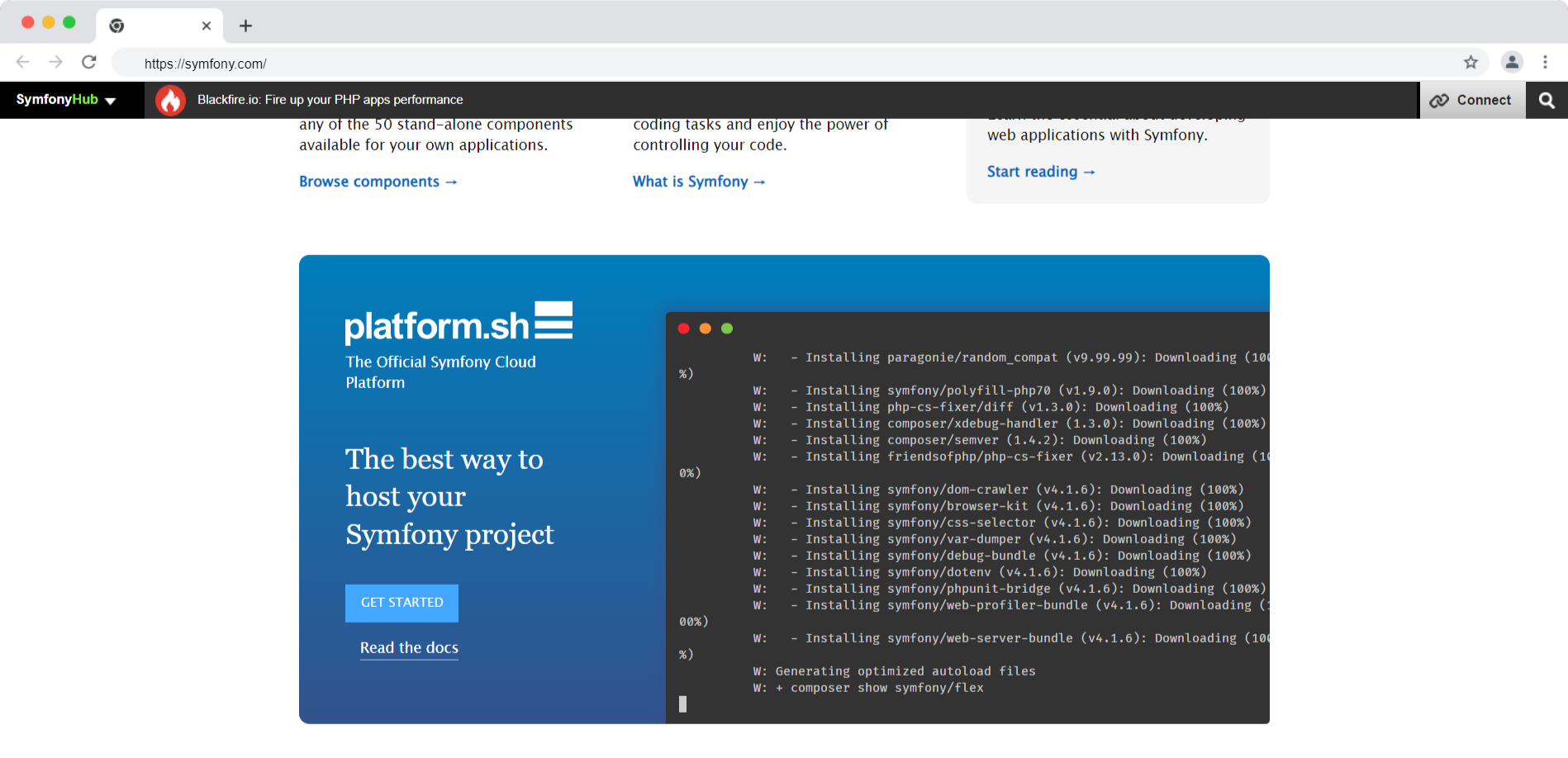
2. Laravel
Laravel is an open-source PHP web application framework designed to make it easy to build modern, powerful web applications. It is built on top of several Symfony components, and provides a set of tools and conventions for organizing and building PHP code. Laravel aims to make it easy for developers to write clean, maintainable code by providing a set of best practices and a built-in testing framework.
Some of the key features of Laravel include:
- A powerful routing system that allows developers to easily define routes and handle HTTP requests
- Laravel Homestead is a built-in development environment to assist in hassle-free development
- An ORM (Object-Relational Mapper) that simplifies database interactions and supports multiple database systems
- Blade, a lightweight template engine that makes it easy to create dynamic views
- Packalyst, a Laravel package collection 15,000 strong.
- Support for dependency injection, a technique for managing object dependencies in a flexible and decoupled way
- A command-line interface (CLI) that provides tools for managing and deploying Laravel applications
Laravel is widely used to build web applications of all sizes, from small sites to large, enterprise-level applications. It is known for its elegant syntax, robust set of features, and strong developer community.

3. CodeIgniter
CodeIgniter is an open-source PHP web application framework used for building dynamic websites. It is designed to be lightweight and easy to use, with a small footprint and minimal requirements for installation.
Some of the key features of CodeIgniter are:
- A simple, intuitive interface that makes it easy for developers to get started quickly
- A set of libraries and helper functions that simplify common web development tasks, such as form validation and session management
- Multiple caching allows faster deployment
- A lightweight, MVC-based architecture that separates the presentation layer from the business logic
- A built-in security layer that helps protect against common web vulnerabilities, such as cross-site scripting (XSS) and SQL injection attacks
CodeIgniter is a popular choice for developers who want a simple, easy-to-use framework for building dynamic websites. It is known for its small footprint, good performance, and clear documentation.
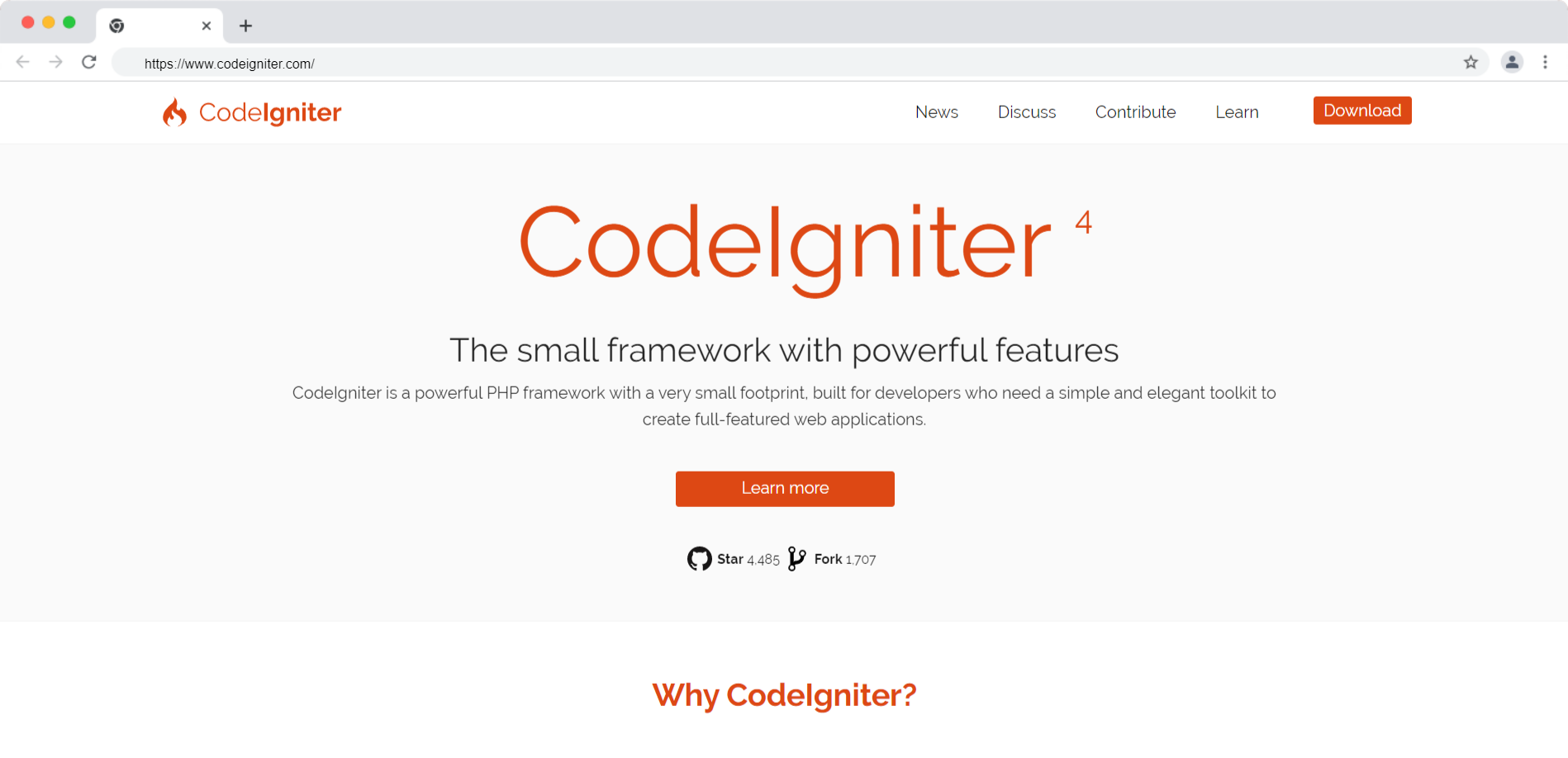
4. Yii 2
Yii 2 is an open-source PHP web application framework used for building web applications, APIs, and microservices, now upgraded as Yii 2. It is based on the model-view-controller (MVC) architectural pattern and is designed to be fast, secure, and easy to use.
Some of the key features of Yii 2 are:
- Easily integrable with jQuery and AJAX.
- A powerful routing system that allows developers to easily define routes and handle HTTP requests
- An MVC (Model-View-Controller) architecture that separates the presentation layer from the business logic
- A built-in ORM (Object-Relational Mapper) that simplifies database interactions and supports multiple database systems
- A set of tools and libraries for common web development tasks, such as form validation and session management
- A security system that provides tools for managing user authentication and authorization
Yii 2 is a good choice for developers who need a fast, secure, and easy-to-use framework for building web applications. It is known for its performance, security, and extensibility, and is often used for building large, enterprise-level applications.
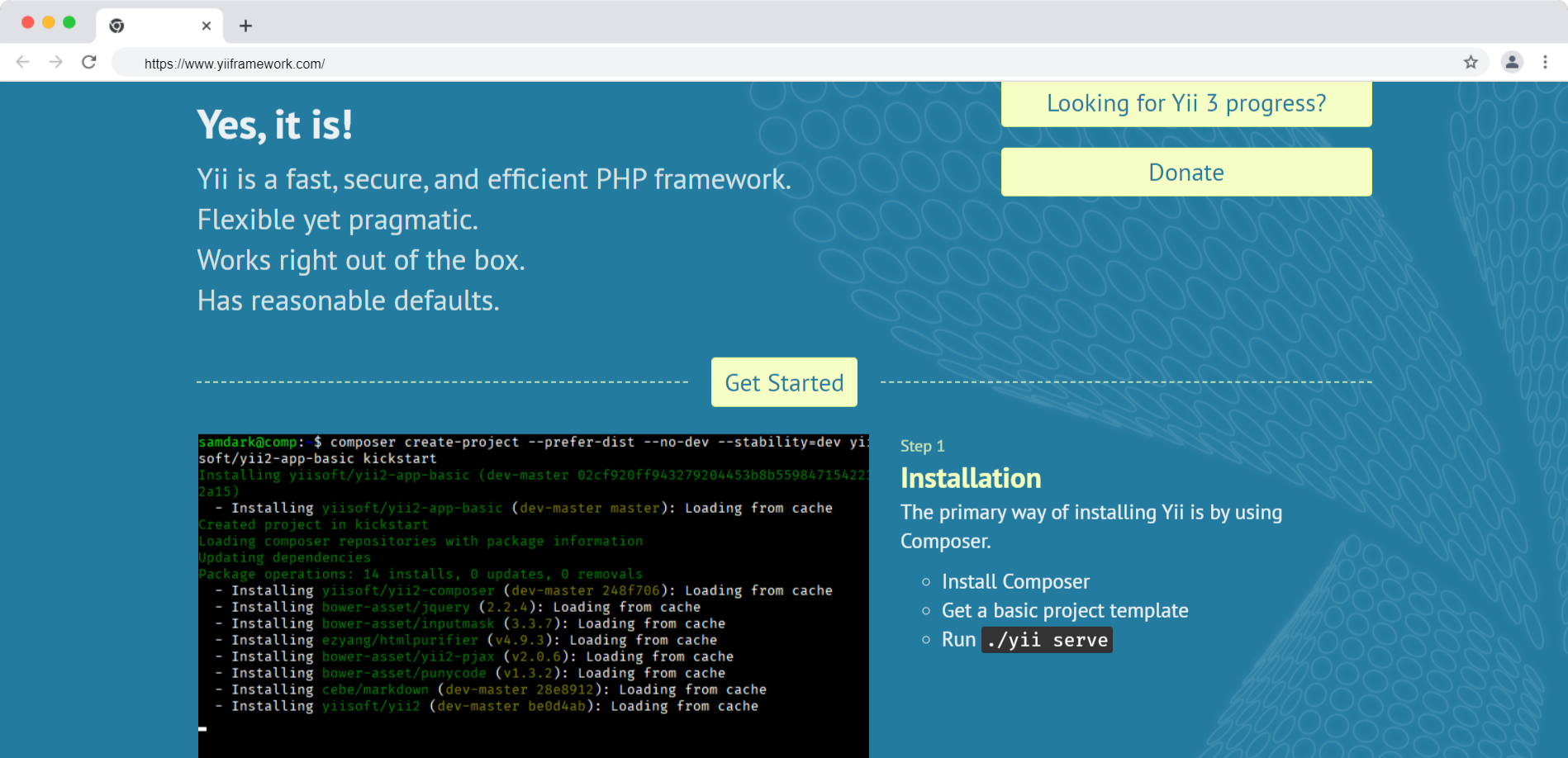
5. Slim
Slim is a lightweight PHP microframework for building web applications and APIs. It is designed to be simple, fast, and easy to use, with a small footprint and minimal requirements for installation.
Some of the key features of Slim are:
- A simple, intuitive interface that makes it easy for developers to get started quickly
- A powerful routing system that allows developers to easily define routes and handle HTTP requests
- A dependency injection container that helps developers manage object dependencies in a flexible and decoupled way
- A set of middleware classes that can be used to modify HTTP requests and responses as they pass through the application
Slim is a good choice for developers who want a lightweight framework for building web applications and APIs especially those who are building RESTful APIs and services. It is known for its simplicity and ease of use, and is often used for building small, focused applications.

6. Phalcon
Phalcon is an open-source PHP web framework based on the model-view-controller (MVC) architectural pattern. It is implemented as a PHP extension written in the C programming language, which makes it faster and more efficient than many other PHP frameworks.
Some of the key features of Phalcon are:
- A fast, efficient architecture that is implemented as a PHP extension, which makes it one of the fastest PHP frameworks available
- A powerful routing system that allows developers to easily define routes and handle HTTP requests
- A built-in ORM (Object-Relational Mapper) that simplifies database interactions and supports multiple database systems
- A set of tools and libraries for common web development tasks, such as form validation and session management
Phalcon is a good choice for developers who need a fast, efficient framework for building web applications. It is known for its performance and low overhead, and is often used for building high-traffic, resource-intensive applications.
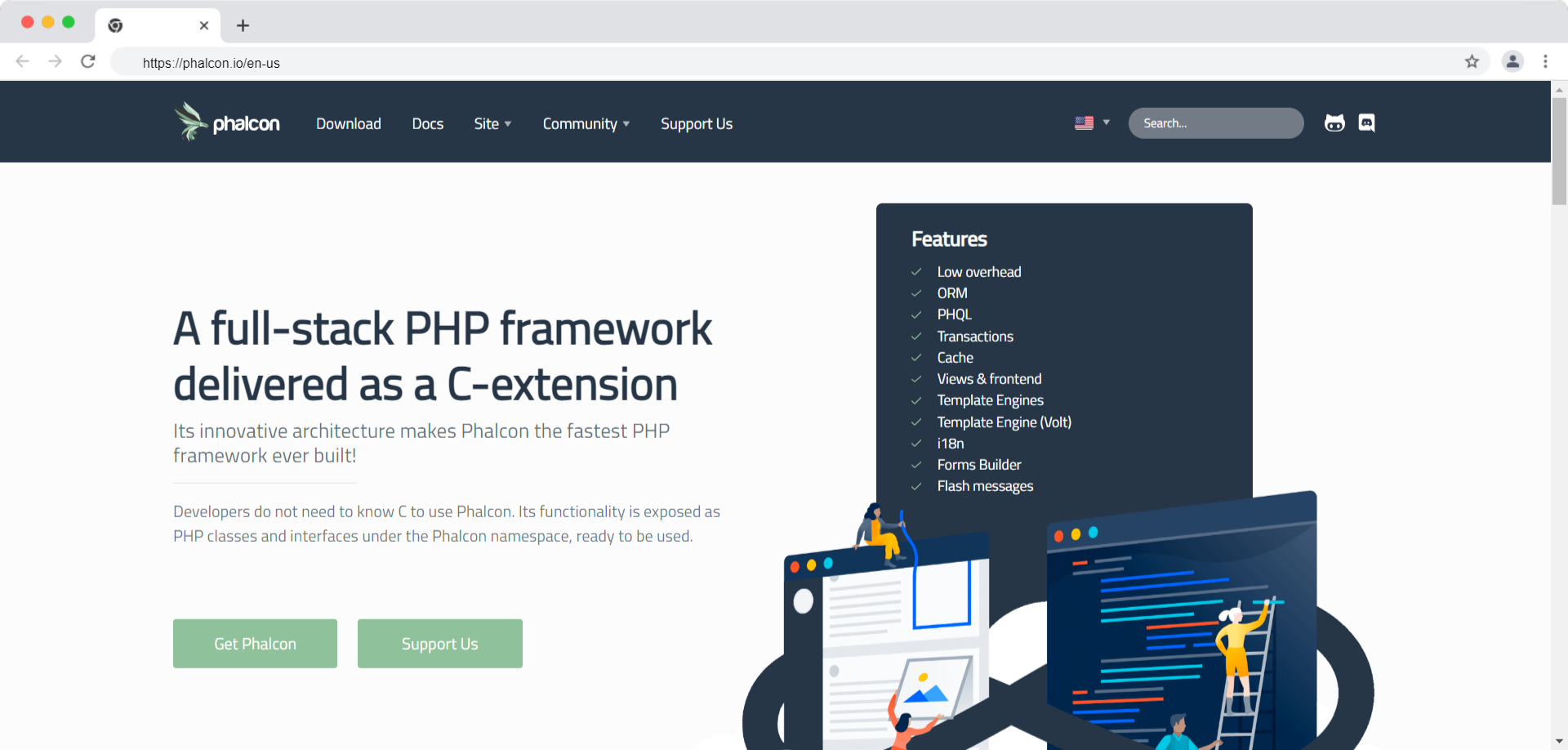
7. Laminas
Laminas is an open-source PHP web application framework used for building web applications, APIs, and microservices. Earlier known by the name, Zend Framework. It was built considering certain parameters like - speed, security, performance and extensibility in mind.
Some of the key features of Laminas are:
- A powerful routing system that allows developers to easily define routes and handle HTTP requests
- An MVC (Model-View-Controller) architecture that separates the presentation layer from the business logic
- A built-in ORM (Object-Relational Mapper) that simplifies database interactions and supports multiple database systems
- A set of tools and libraries for common web development tasks, such as form validation and session management, also integrates with third party libraries
- Support for dependency injection, a technique for managing object dependencies in a flexible and decoupled way
Laminas is a good choice for developers who need a comprehensive, full-featured framework for building web applications. It is known for its robust set of features and its strong emphasis on performance and scalability. Cisco WebEx and BBC are known to have used Zend Framework for their website development.
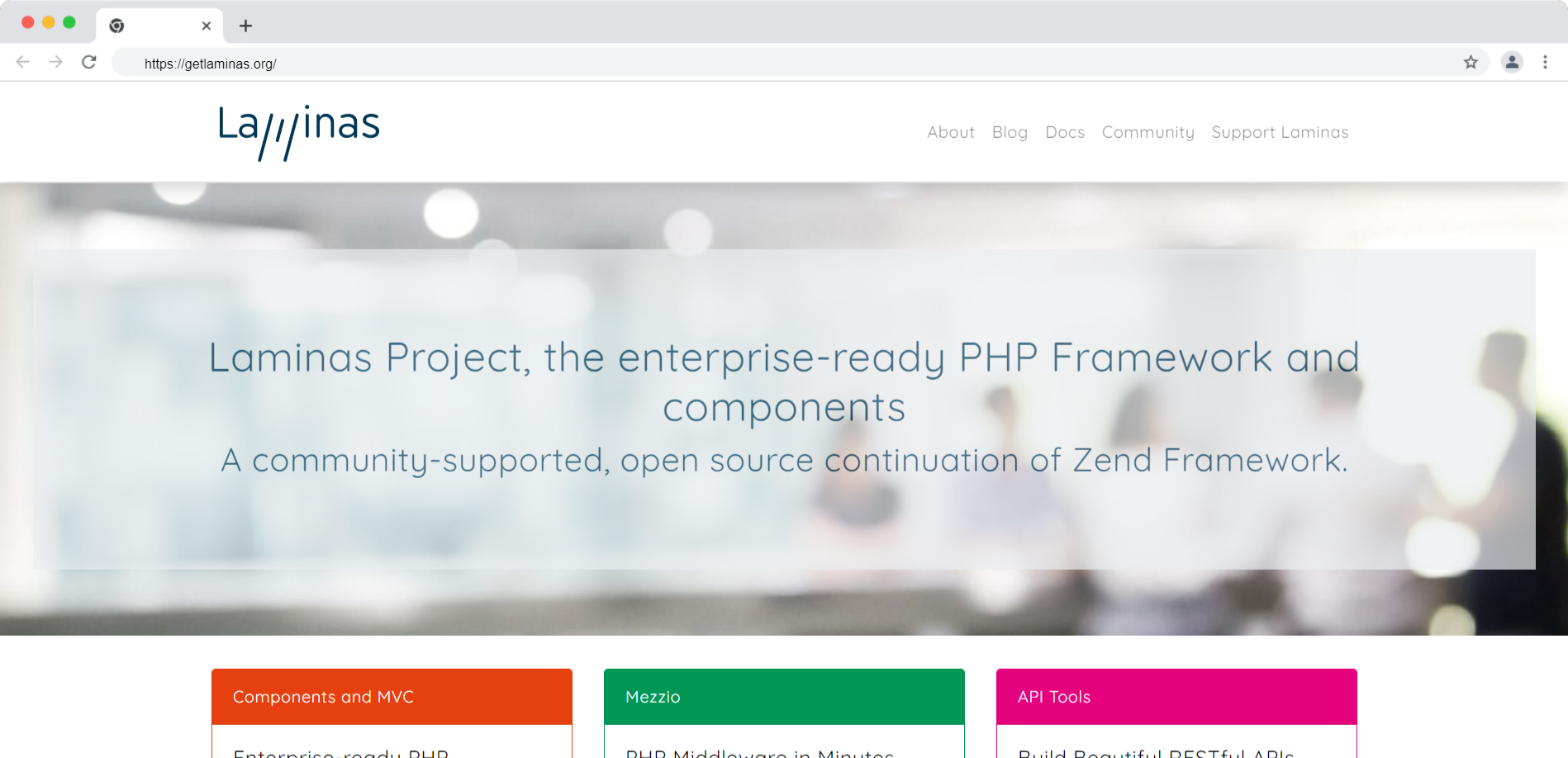
8. CakePHP
CakePHP is an open-source PHP web application framework used for building web applications. It is based on the model-view-controller (MVC) architectural pattern and follows a convention-over-configuration approach, which means that it provides a set of conventions for organizing and building PHP code, and requires less configuration than some other frameworks.
Some of the key features of CakePHP are:
- A powerful routing system that allows developers to easily define routes and handle HTTP requests
- An MVC (Model-View-Controller) architecture that separates the presentation layer from the business logic
- A built-in ORM (Object-Relational Mapper) that simplifies database interactions and supports multiple database systems
- A set of tools and libraries for common web development tasks, such as form validation and session management
- A command-line interface (CLI) that provides tools for managing and deploying CakePHP applications
CakePHP is a good choice for developers who want a simple, easy-to-use framework for building web applications. It is known for its convention-over-configuration approach and its clear documentation.
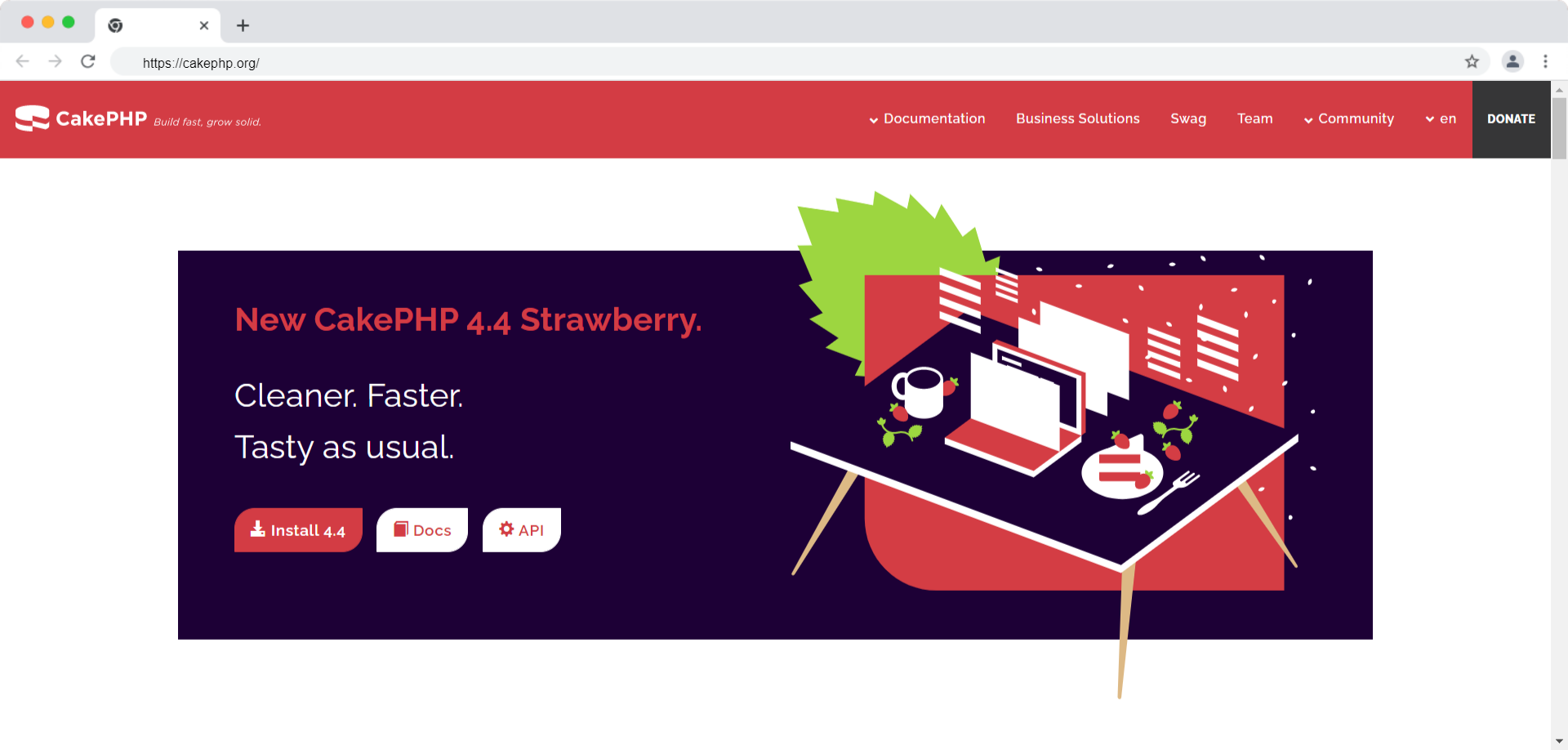
9. PHPixie
PHPixie is an open-source PHP web application framework used for building web applications, APIs, and microservices. It is based on the model-view-controller (MVC) architectural pattern and is designed to be lightweight, fast, and easy to use.
Some of the key features of PHPixie are:
- A powerful routing system that allows developers to easily define routes and handle HTTP requests
- An MVC (Model-View-Controller) architecture that separates the presentation layer from the business logic
- A built-in ORM (Object-Relational Mapper) that simplifies database interactions and supports multiple database systems
- A set of tools and libraries for common web development tasks, such as form validation and session management
- A command-line interface (CLI) that provides tools for managing and deploying PHPixie applications
PHPixie is a good choice for developers who want a lightweight, fast, and easy-to-use framework for building web applications. It is known for its simplicity and performance, and is often used for building small, focused applications.
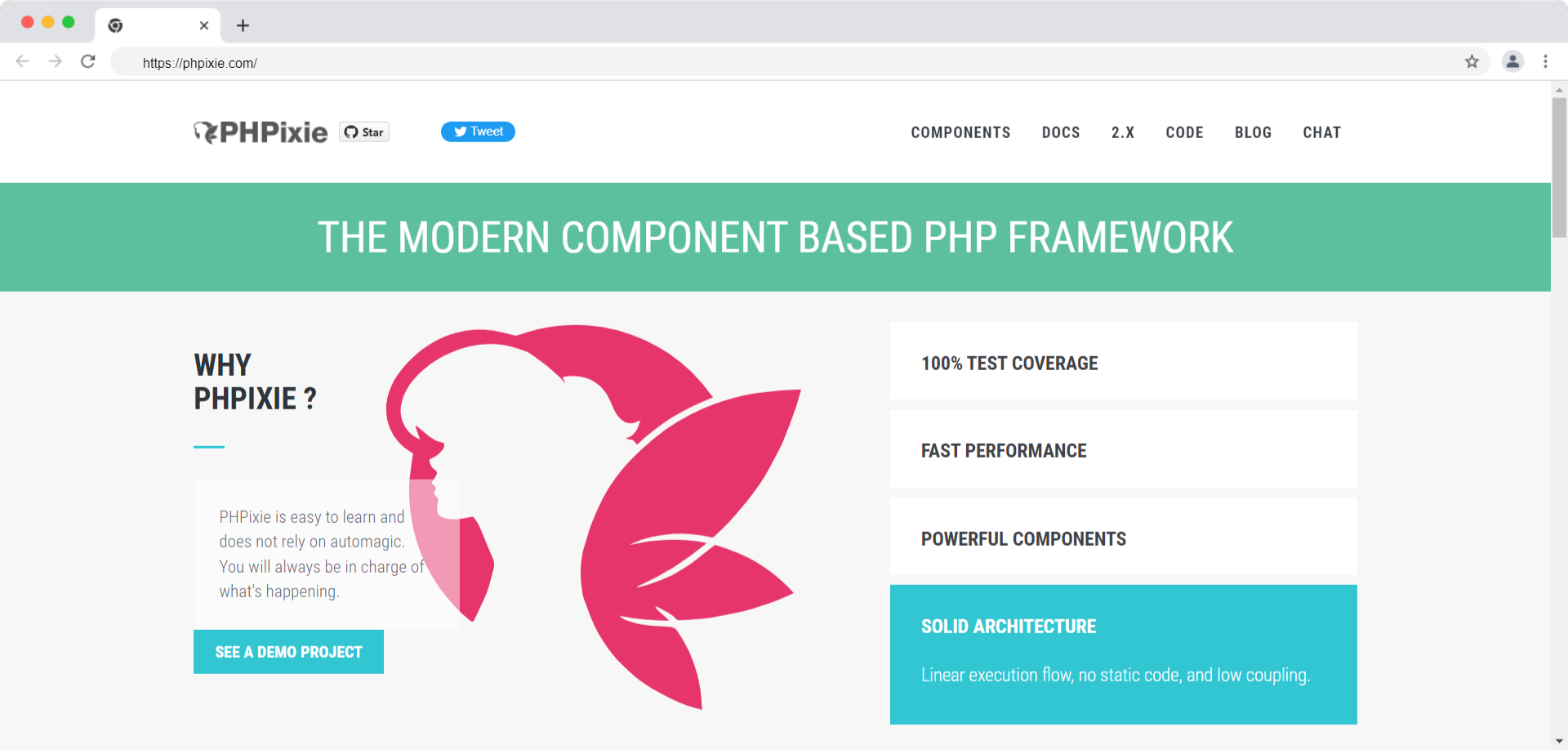
10. FuelPHP
FuelPHP is an open-source PHP web application framework used for building web applications, APIs, and microservices. It is based on the hierarchical-model-view-controller (HMVC) architectural pattern and is designed to be flexible, extensible, and secure.
Some of the key features of FuelPHP are:
- Has a property management system called Front Desk
- A powerful routing system that allows developers to easily define routes and handle HTTP requests
- An HMVC (Hierarchical-Model-View-Controller) architecture that separates the presentation layer from the business logic
- A built-in ORM (Object-Relational Mapper) that simplifies database interactions and supports multiple database systems
- A set of tools and libraries for common web development tasks, such as form validation and session management
- A security system that provides tools for managing user authentication and authorization
FuelPHP is a good choice for developers who need a flexible, extensible, and secure framework for building web applications. It is known for its robust set of features and its strong emphasis on performance and scalability.
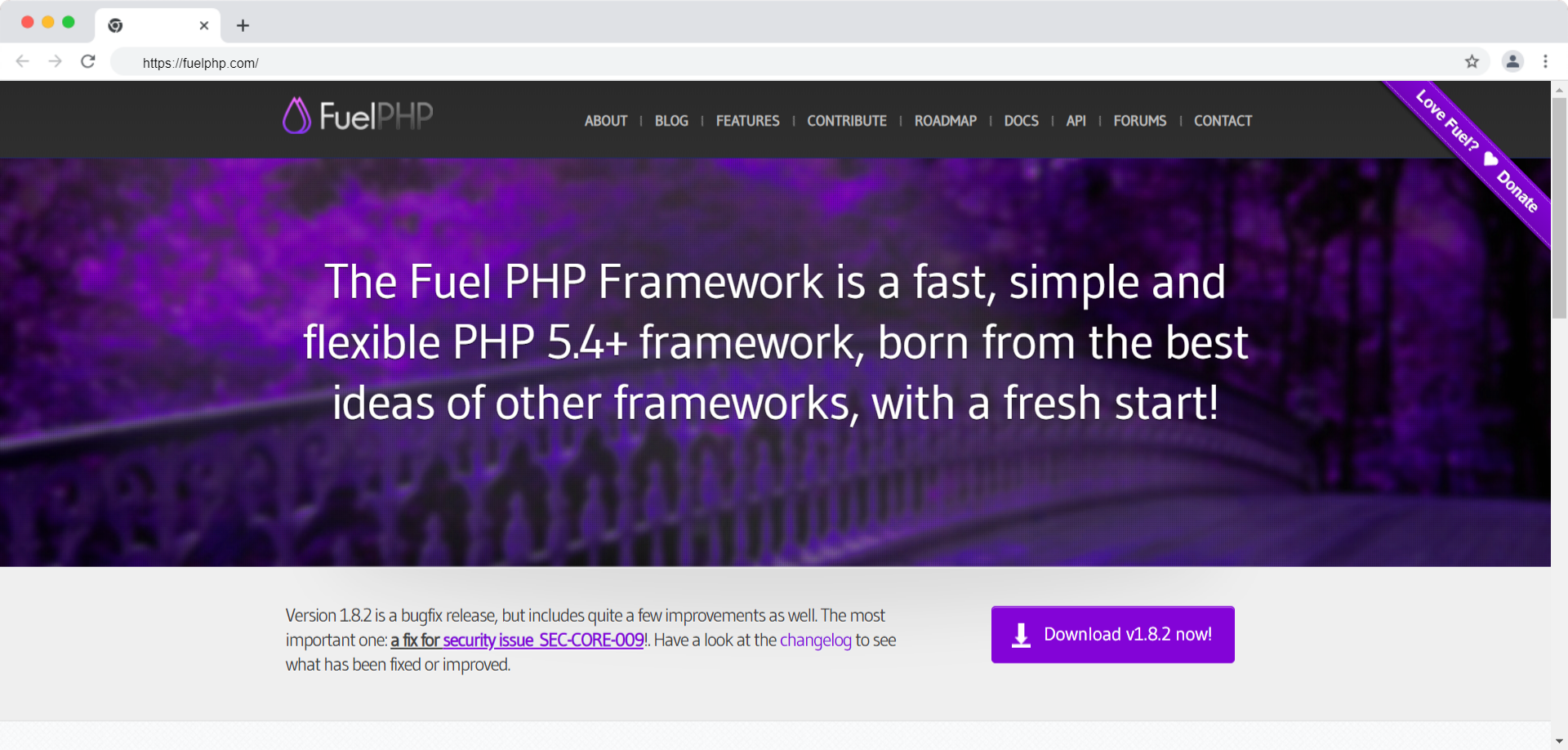
Conclusion
The world is pacing fast, tech developers are moving on from C and SQL to Python and Java. Today we even have Swift and Kotlin. But if one of these were to be picked out for its backend operational coding capacities, PHP would win the bet any day.
As for the choice of frameworks, you can look at the list I have given above. But on a personal note, CodeIgniter and Slim are beginner-friendly frameworks with a very easy-to-approach, simpler learning curve.
But on the other hand, if you are a experienced developer, you might very well opt Symfony, because it has a higher learning curve but is the best in terms of performance.
For all others in between, Laravel is the best choice. With its own development environment Laravel homestead and valet, supported on both Linux and Mac OS Laravel was quick to climb the ladders for the top performing PHP Frameworks even in 2022.
As I have always said, just because something is popular, doesn't make it the right fit for you. Look into the specifications of each framework, jog out things that are necessary for your application, see if it fits your needs. That's the magical three-step routine which will give you optimum output for your money.
Atatus: PHP Performance Monitoring and Log Management
Atatus is an Application Performance Management (APM) solution that collects all requests to your PHP applications without requiring you to change your source code. However, the tool does more than just keep track of your application's performance.
Monitor logs from all of your PHP applications and systems into a centralized and easy-to-navigate user interface, allowing you to troubleshoot faster using PHP monitoring.
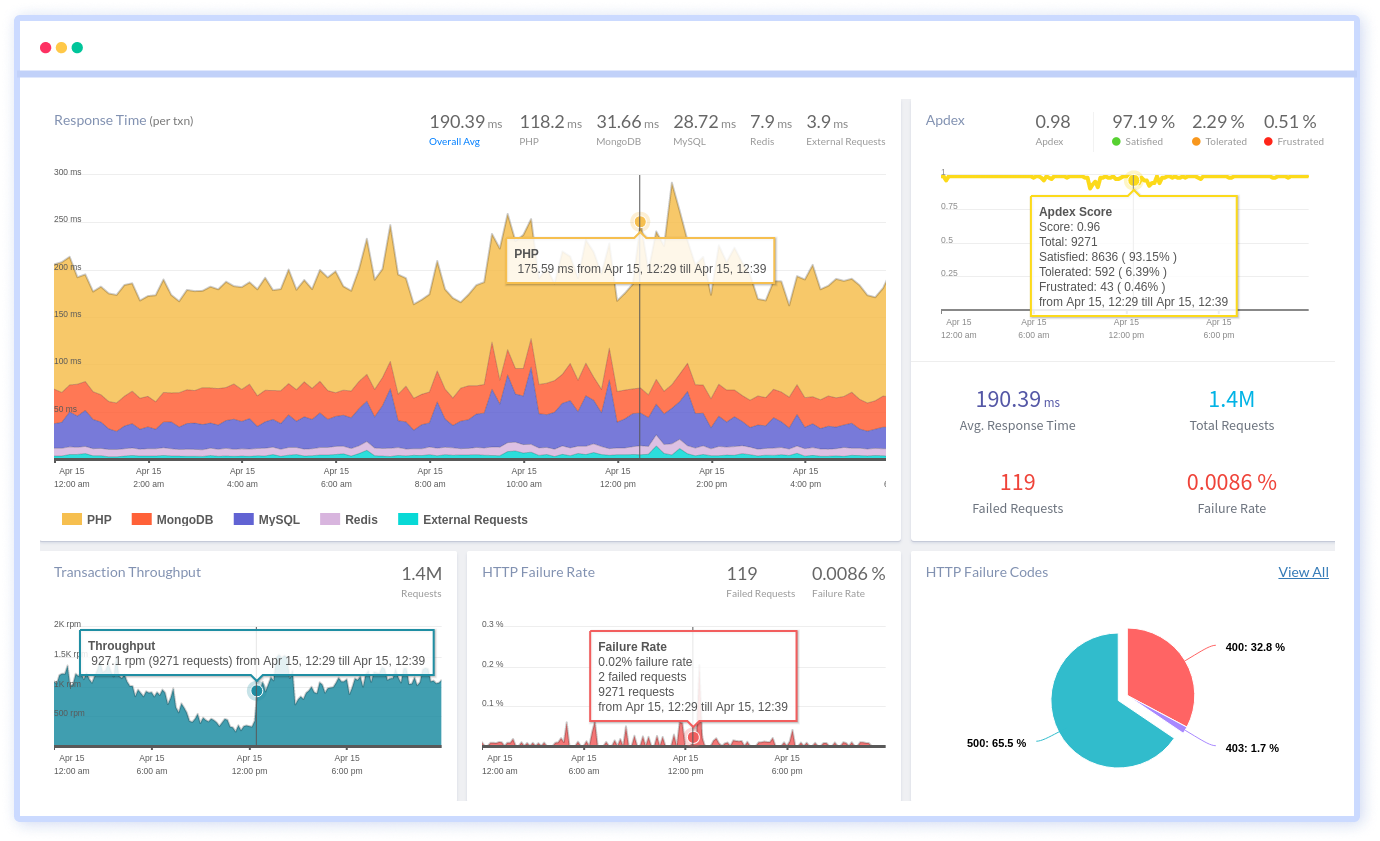
We give a cost-effective, scalable method to centralized PHP logging, so you can obtain total insight across your complex architecture. To cut through the noise and focus on the key events that matter, you can search the logs by hostname, service, source, messages, and more. When you can correlate log events with APM slow traces and errors, troubleshooting becomes easy.
We offer Application Performance Monitoring, Real User Monitoring, Serverless Monitoring, Logs Monitoring, Synthetic Monitoring, Uptime Monitoring, and API Analytics. It works perfectly with any application, regardless of framework, and has plugins.
#1 Solution for Logs, Traces & Metrics
APM
Kubernetes
Logs
Synthetics
RUM
Serverless
Security
More

